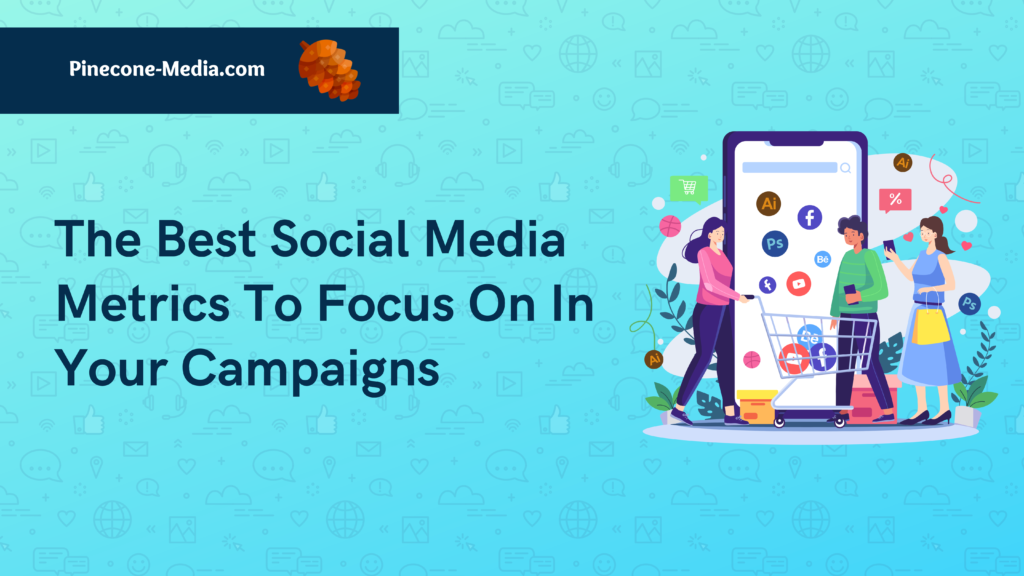Introduction
I’m sure you’re familiar with the most basic social media metrics—like how many likes, shares or comments your last post got. But what about more valuable data? What about digging into your audience demographics and interests? Or looking at engagement rates by day of the week or time of day? The truth is that there are a lot of things you can learn from your social media analytics. And while that may feel overwhelming at first (good news: it doesn’t have to be), we’re here to help! In this post, we’ll cover some of the key ways you can use social media analytics data like never before so that you can get even more value out of every single one of those posts.
Social media metrics to track on Facebook
- Page Likes
- Page Post Engagement
- Page Post Reach
- Page Post Organic Reach: This metric measures the number of people who have seen your post within their Facebook News Feed as a result of interactions with your post, such as likes and comments. The more engagement your posts receive, the better this metric will look for you.
- Video Views: This indicates how many times users have watched your video on their mobile devices or desktop computers. You can access this data by clicking on “Videos” in Insights under the Overview tab at the top of any Facebook page.
Social media metrics to track on Instagram
The following metrics are available on Instagram:
- Number of followers: The number of people following your account.
- Number of posts: The total number of posts you have made to the platform.
- Number of likes: How many likes each post has received.
- Number of comments: How many comments each post has received.
- Number of shares: The total number of times people have shared your posts with their friends and followers (this doesn’t necessarily mean they interacted with it). * Average engagement rate (percentage): Shows how engaging your content is based on its average interactions per 1,000 impressions (views).
Social media metrics to track on Twitter
The Twitter account of your brand is the perfect place to track retweets and followers.
You can also monitor engagement rate and reply rate to see how many people are engaging with your tweets, as well as mentions, favorites and timeline views.
You should also check out the performance of individual tweets: what’s working best? Which ones are driving traffic to your website? What content is resonating with your audience?
Social media metrics to track on LinkedIn
LinkedIn has a lot of great features that can help you measure your campaign’s performance.
- LinkedIn Insights. You can track your campaign’s performance with LinkedIn Insights, which provides analytics for social media campaigns and other content shared on the platform. With this data, you’ll be able to see how many people have engaged with your posts, where those people are located geographically, how long they’ve spent viewing each post and much more! You can also see the impact of sponsored updates on your company page by using “Sponsored Updates” in the top menu bar under “Insights.”
- LinkedIn Ads Manager. If you’re using advertising as part of your social media strategy, then make sure that it’s working! Check out our guide: The Best Social Media Metrics To Focus On In Your Campaigns (Part 2), which explains how to use this tool effectively so that you can get an idea of what works well for different audiences or topics (like B2B vs B2C).
Social media metrics to track on Pinterest
On Pinterest, you should be tracking the following metrics:
- Number of repins
- Number of likes
- Number of comments
- Unique visitors per month
- Average time spent on site (the longer the better)
Social media metrics to track on YouTube
You probably already know that your main goal on YouTube is to get people to watch your videos, but there are a few other social media metrics that you should be paying attention to. These metrics include:
- Views
- Subscribers
- Likes
- Comments/Dislikes (both as an average and in total)
- Shares of your video content across different platforms. This includes Facebook, Twitter, LinkedIn, Pinterest and more! It’s important because it shows how much awareness your campaign video has generated across different channels – not just YouTube.
While the above metrics will help you gauge the success of a video on YouTube, there are less obvious ones that can give you even more insight into what’s going right or wrong with your marketing efforts:
While no one would argue about the importance of keeping track of those stats (that’s why they’re right up front), there’s more valuable intelligence to be gathered by doing a deeper dive.
While no one would argue about the importance of keeping track of those stats (that’s why they’re right up front), there’s more valuable intelligence to be gathered by doing a deeper dive. Social media metrics are critical for measuring the ROI and effectiveness of your campaigns, but they also offer additional insights into brand awareness, engagement, and reach. Let’s take a look at what social media metrics mean for your marketing strategy.
While no one would argue about the importance of keeping track of those stats (that’s why they’re right up front), there’s more valuable intelligence to be gathered by doing a deeper dive. Social media metrics are critical for measuring the ROI and effectiveness of your campaigns, but they also offer additional insights into brand awareness, engagement, and reach. Let’s take a look at what social media metrics mean for your marketing strategy.





